Back in the early ‘90s, the Ducati Monster wasn't just another new motorcycle. It defined an entire segment of motorcycling. In a world of full-faired sportbikes and race replicas, this stripped-down machine showed that performance didn’t need to hide behind bodywork.
It was light, aggressive, and built around a chassis meant for the track but tuned for on-road usability. The Monster practically wrote the rulebook for today's naked bikes, and three decades later, it’s still the name everyone thinks of when you say “naked Ducati.”
For me, the Monster was one of those dream bikes that seemed just within reach. The one I used to endlessly browse used listings for was the Monster 696. That perfect blend of Italian flair and real-world usability felt like something I just had to have. It looked muscular, intimidating, and seriously powerful. I never bought one though, as I ended up going for something a bit more Japanese and a lot more affordable to own and maintain. Still, the Monster stayed on my mind. It was the sensible Ducati. The one that proved that you didn't need a superbike to have an exhilarating ride.

Fast forward to today, and Ducati is still evolving that same philosophy with the new 2026 Monster. This marks the fifth generation of the bike that started it all, and it’s a blend of everything the brand has learned since 1992. From Miguel Galluzzi’s original trellis-framed design to Andrea Amato’s modern reinterpretation, the Monster has been through countless transformations. And for those who've ridden these bikes, they'd say that the Monster never lost its soul.
The latest version builds on the 2021 model’s sleek, minimal silhouette while bringing back some of the muscular energy that defined earlier Monsters. The frame is a big talking point again, though not because it dominates the design. In fact, it’s now almost invisible. Ducati’s aluminum monocoque chassis connects directly to the engine, which acts as a stressed member. It’s a clever setup that trims weight and improves rigidity.
And about that engine, Ducati’s 890cc V2 isn’t just a shrunken-down superbike motor. It’s tuned specifically for the road, with smoother low-end manners and a flatter torque curve that suits everyday riding. Power peaks at 111 horsepower at 9,000 rpm and 67 pound-feet of torque at 7,250 rpm.

Sure, that’s a bit tamer than the Panigale V2 or Streetfighter V2, but Ducati made up for it with broader power delivery and a fatter torque curve. The V2’s variable intake timing system gives it the kind of flexibility that makes the Monster easy to live with. The brand says 80 percent of the torque is available between 4,000 and 10,000 rpm, so you don’t have to wring it out to enjoy it.
And because this is Ducati, the tech goes far beyond the engine. Ride-by-wire throttle, four selectable ride modes (Sport, Road, Urban, and Wet), traction control, wheelie control, cornering ABS, and engine brake control are all standard. A new petal-shaped joystick controls the electronics via a five-inch TFT display that looks sharp and modern. The screen even offers turn-by-turn navigation and multiple display layouts.
Underneath, the suspension setup is well-balanced for sporty road use: a 43mm inverted Showa fork up front and a preload-adjustable monoshock at the back. Braking is handled by dual 320 mm discs with Brembo M4.32 calipers and Bosch cornering ABS. The rear gets a single 245 mm disc. Ducati claims a weight of 386 pounds without fuel, which puts the bike around 408 pounds fully gassed up, making it among the lightest in its class.



The ergonomics have been revised, too. The seat height is now 32.1 inches tall, a touch lower than before, and the saddle itself is narrower, making this bike more accessible to height-challenged folks like myself. The handlebar sits slightly higher and closer to the rider, striking a balance between sportiness and comfort. The 14-liter fuel tank keeps the Monster’s signature “bison-back” shape but adds sharper creases and functional side vents that help direct heat away from the rider.
It’s those little touches that show how much Ducati listens. The textured side covers, for example, aren’t just for looks. They give your knees something to grip during hard braking. Even the Ducati crest on the panels, complete with the coordinates of the Borgo Panigale factory, feels like a small love letter to the brand’s heritage.
In the US, Ducati will only offer the Monster+ trim, which adds a small flyscreen and a color-matched seat cowl. Pricing starts at $13,995 for Ducati Red and $14,195 for Iceberg White, with deliveries expected to begin by March 2026.
Gallery: 2026 Ducati Monster
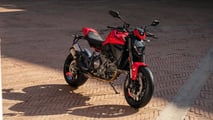
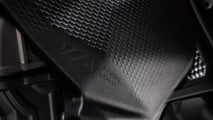
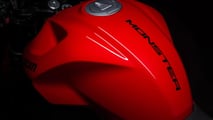
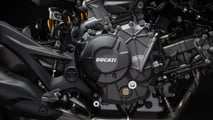
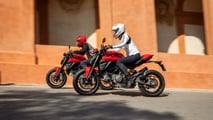
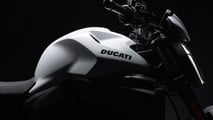
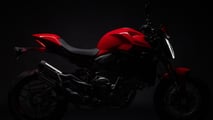
For naked and sportbike enthusiasts, the new Monster is quite a big deal. It shows us how a formula that seems to have already been perfected can still be improved upon. Three decades later, it’s still the same Monster in spirit: the bike that made Ducati accessible, the one that gave us an entry point into the world of Italian performance. This new one just happens to be smarter, lighter, and friendlier to live with.
For riders like me who grew up dreaming of earlier generations of the Monster, the 2026 model is more than just an update. It’s proof that even icons can evolve without losing their identity.
Source: Ducati








